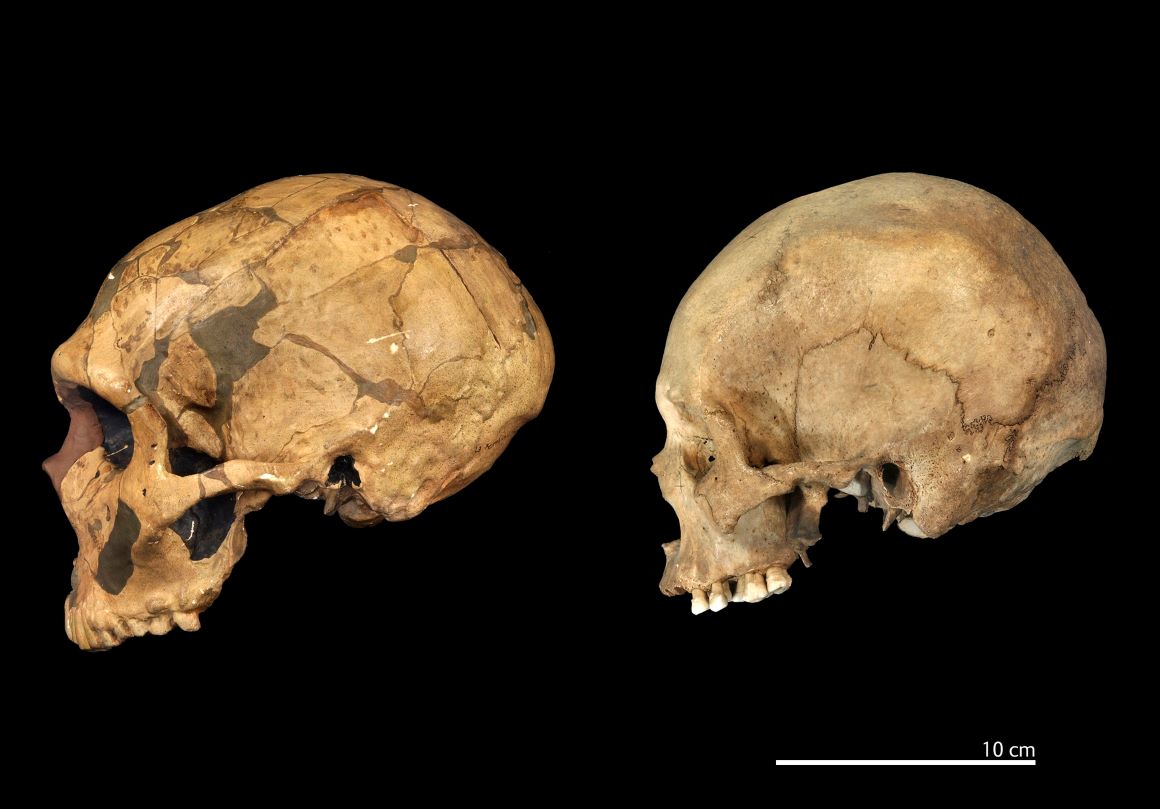A new study published by researchers at London’s Natural History Museum and Institute of Philosophy, KU Leuven has reinforced the claim that Neanderthals and modern-day humans (Homo sapiens) must be classed as separate species in order to best track our evolutionary history.
Different researchers have different definitions as to what classifies as a species. It is undisputed that H. sapiens and Neanderthals originate from the same parental species, however studies into Neanderthal genetics and evolution have reignited the debate over whether they should be classed as separate from H. sapiens or rather a subspecies (H. sapiens neanderthalensis).
Advocating the former, Chris Stringer (Natural History Museum, London) and Andra Meneganzin (Institute of Philosophy, KU Leuven, Belgium) state that despitethe inherent limitations of the fossil record, there is enough morphological, ecological, genetic and temporal evidence to justify this categorisation, and claim that this evidence reflects the complexity of the speciation process, in which populations from one parent species progressively diverge to become different descendant species. Taxonomic disagreement, they claim, is best explained by how the speciation process is modelled in the record, rather than conflicts between evidence types.
Dr. Andra Meneganzin, Post-doctoral Fellow at the KU Leuven Institute of Philosophy and lead author of the study, says: “In the science of human origins, implicit and unrealistic theoretical assumptions can be just as limiting as the scarcity of data. Taxonomic disagreement over the classification of our species and Neanderthals offer a prime example of oversimplified expectations regarding the nature of speciation. Both in present and past taxa, speciation unfolds across space and time, through multiple stages involving the incremental acquisition of distinct characters. By reading the fossil records through the temporal and geographic dimensions that shaped past human diversity, available data can become increasingly informative rather than more limiting, and help move debates beyond unproductive deadlocks.
Professor Chris Stringer, Research Leader at the Natural History Museum and joint author of the paper, says: “In the context of Neanderthals and Homo sapiens, we need to regard speciation as a gradual process that occurred over more than 400,000 years. It is correct that the two interbred where they were not geographically separate, but over time differentiation continued to a point where the two were distinctly different species. When the Neanderthals died out around 40,000 years ago, the two species were in the final stage of the speciation process and were developing reproductive isolation from each other.”
Mapping speciation over a 400,000-year period from palaeontological and archaeological evidence has proven challenging for scientists, as in the later stages of speciation H. sapiens and Neanderthals continued to interbreed and exchange genes and behaviours. However, to reliably trace modern human evolution, categorisations need to be made about anatomical and geographical developments. The study claims that if interbreeding was the final word in determining species status, then hundreds of distinct species of mammals and birds today would have their separate species status revoked and that without recognising patterns in evolution and subsequent categorisation, the question of when a species first appeared becomes more intractable.
Fossil records show that H. sapiens developed in Africa, whilst Neanderthals evolved in Eurasia for at least 400,000 years, with interbreeding occurring as H. sapiens expanded out of the former region. However, the study argues that by the time of H. sapiens expansion and subsequent interbreeding, differentiation between the two species had occurred to the point where they were distinguishable species. One striking example of differentiation is that their ecological profiles were distinguishable and associated with "minimally different” habitats.
Neanderthals were better equipped to cope with colder climates – an adaptation which even today we have not yet fully developed without the use of technology. They had to be more physically active and for longer periods, to gather the resources they needed for survival, which helps to explain morphological differences including ribcage and pelvis shapes, inferring bigger internal organs such as the lungs, heart and liver – amongst a wide range of anatomical distinctions. This may have been a factor in their extinction, as the more gracile skeleton of H. sapiens suggests a more economical physiology, less demanding of energy and resources, and aided by complex technology. This could have made the difference between survival and extinction when there was rapid climate change, or a strong competition for resources where the two coexisted.
An ever-evolving field of research, this bold new paper hopes to provide an explicit theoretical framework for future study, calling for a more nuanced chronological and evolutionary contextualisation of the available fossil record.
Homo sapiens, Neanderthals and Speciation Complexity in Palaeoanthropology is available to read now in Evolutionary Journal of Linnean Society.
The Natural History Museum has ten research themes helping to find solutions to some of the biggest global challenges. From tackling climate change and meeting the mineral needs of a net zero world to restoring biodiversity and achieving food security, its collections offer insight into how we create a brighter future for both people and the planet.
ENDS
Press Contact
For press enquiries or to request interview time, please contact the Natural History Museum press office: press@nhm.ac.uk.
About Natural History Museum
The Natural History Museum is a world-leading science centre and one of the most visited attractions in the UK. A global source of curiosity, inspiration and joy. Our vision is to build a future in which both people and the planet thrive. We aim to be a catalyst for change, engaging advocates for the planet in everything that we do. Our 370 scientists are finding solutions to the planetary emergency in all aspects of life. Visit, join and support the Natural History Museum today. Protecting the planet. It's in our nature.

Don't miss a thing
Receive email updates about our news, science, exhibitions, events, products, services and fundraising activities. We may occasionally include third-party content from our corporate partners and other museums. We will not share your personal details with these third parties. You must be over the age of 13. Privacy notice.
Follow us on social media